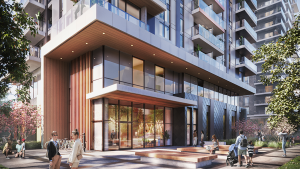Trapped heavy equipment operators can now punch their way through glass to freedom.
A small red button designed to smash through glass, called the Safe T Punch, was approved by WorkSafeBC as a secondary means of escape in mobile equipment.
The punch clings to windows.
A tab is pulled, the button is pushed and the window shatters outwards, allowing those inside to exit.
The product is already extensively used on buses in parts of Africa and the U.K.
"B.C. Road Builders are pleased WorkSafeBC recognized the Safe T Punch as a common sense solution to provide a safe escape for operators of heavy equipment, where the standard escape hatch is not present or is not effective," Said Jack Davidson, president of B.C. Road Builders and Heavy Construction Association.
"It’s simple and we were happy that we can use it on our equipment that doesn’t have a secondary hatch, and allow our workers an easy means of escape, and in the case where rescue is needed, a secondary option for rescuers."
Davidson added that while he doesn’t expect widespread use of the device, it will be especially useful on equipment where installing a secondary hatch would hinder its function.
Guidelines state that mobile equipment with a single cab entrance door must have an alternate means of escape that is clearly marked both inside and outside the cab. It also must be quick and easy to use in the event of an emergency.
The idea is to leave occupants another way to escape if the main exit is not usable due to fire, overturn, submersion or other incident.
Often an opening window can be built into a cab design, or a second door or hatch can be installed in the cab.
However, according to WorkSafeBC, in some cases cab structural strength would be significantly altered by installing an alternate means of escape, or would affect the machine capacity or range of motion.
Sometimes, retrofitting or adding extra doors or hatches is an expensive undertaking, with some estimates reaching as much as $500,000.
According to the new WorkSafeBC rules, in these circumstances, it may be acceptable to install a purpose-built device to break a window in an emergency so that a person can escape from a cab. But, building an escape hatch is the preferred method of secondary escape.
The safety authority maintains that a hatch or window has some important advantages in terms of reliability.
For example, a hatch can be tested and drills can be run regularly to check that the operator can open it in an emergency situation, whereas the purpose-built device cannot readily be tested to ensure the operator can use it to break a window in an emergency.
In order to qualify for a Safe T Punch, several criteria must be met.
First, installing an escape hatch must be impractical.
The window must not be too thick and must be the right type of glass.
It must be safe to break the window from the inside and the device cannot create an additional hazard.
It cannot obscure the operators view or hinder equipment operation.
It must also be included in the pre-use inspection of the equipment.











Recent Comments
comments for this post are closed